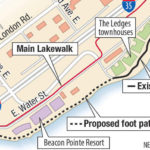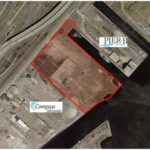Trails, trails, trails.
Let me open with: I’m an overweight man who wonders whether he’s being dishonest when he clicks “stocky” on dating websites. I’m not a hiker. I’m an occasional walker-off-pavement.
A story about paving the Minnesota River Bottoms trail in the Twin Cities makes me think about trails in Duluth and about trails in general. Apparently, paving a trail is very expensive, and for that reason, people don’t want to do it.
Critics say costs to take the trail from dirt to asphalt could ultimately run between $13 and $15 million, an estimate based on other completed trails, which come in as much as $1 million or more per paved mile.
I wonder how much it costs to build a dirt trail, how much it costs to maintain one. Duluth has some public-private partnerships that sustain our trails. I don’t know how that affects overall costs to the taxpayer to maintain them. But I am guessing there is no trail, paved or dirt, that is zero-cost to the taxpayer. John Ramos, arguably one of the Duluthians I learn the most from, has written about the trail system in Duluth. Updated signage alone will cost the city $400,000.
I get so mixed about things like this — so mixed about taxpayer dollars being spent on trails that are intentionally exclusionary (to people with disabilities and mobility issues in aging). I get that paving your trail makes it feel less natural (as if earth packed by pressure of thousands of footsteps is natural). But if you are so committed to an inaccessible form of recreation, then I’m not sure it should be taxpayer funded.
I have two anecdotes that help me explain why I feel this way.
Anecdote 1:
Students of mine worked on a project to design braille and audio signage for a nature trail in St. Paul. When they asked staff about what visually impaired users did, they said “We don’t have any. I’m not sure we need any signage for the visually impaired.” It was cluelessness incarnate. Maybe you have no visually impaired visitors because there is no way to navigate the trails.
Anecdote 2:
If we believe the popular mythology, Robert Moses built bridges over some roads intentionally low enough that buses could not pass under them — structurally keeping the poor out of some neighborhoods. We look at his plans as an exclusionary classism and racism built into concrete. Why is maintaining a dirt trail with tax funds not similarly exclusionary?
I don’t know. Maybe the kerfuffle in the Twin Cities would never happen here, maybe I am complaining about a non-issue. Maybe I’m venting about this because something else is stressing me, and I need to talk to my therapist to discover what is really bothering me.
But these are my thoughts today.
Recommended Links:
Leave a Comment
Only registered members can post a comment , Login / Register Here













7 Comments
Ethan Perry
about 8 years agoKarasu
about 8 years agoDavid Beard
about 8 years agoEthan Perry
about 8 years agomnbeerdrinker
about 8 years agomole Z
about 8 years agoIan Koivisto
about 8 years ago